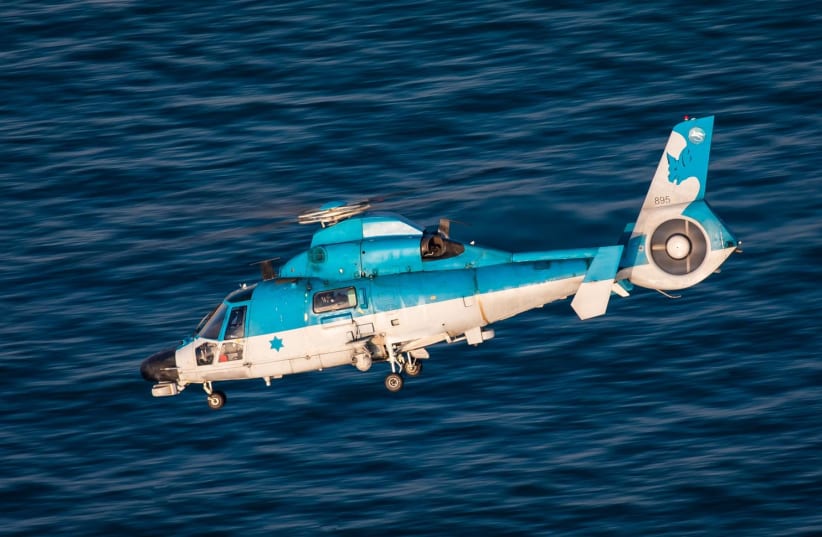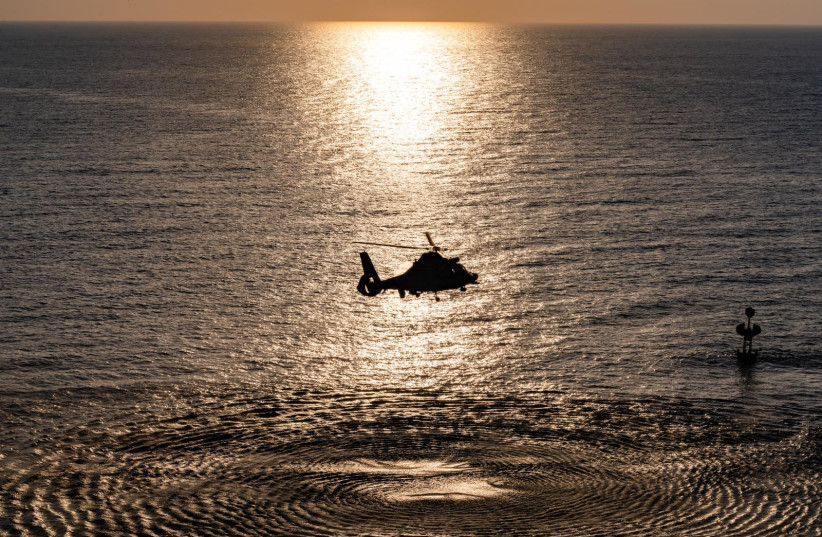The IDF’s final report said the deadly crash of an AS565 Panther “Ataleph” helicopter off the coast of Haifa in early January was caused by extremely rare corrosion within a motor component.
Two IDF pilots, Lt.-Col Erez Sachaini and Maj. Chen Fogel, died when their helicopter went down after a fire broke out in the left engine and crashed off the coast on January 3. The third crew member, naval officer Cpt. Ron Birman, survived.
What did the investigation find?
The investigation confirmed what was found in the preliminary investigations, that the technical malfunction was a result of corrosion deep inside the motor that the manufacturer’s maintenance failed to identify.
The component was not part of routine checks recommended by France-based Airbus Helicopters.
Inspection and repair of the internal components of the engine are done only by the manufacturer and, according to the military, the engine was last inspected by the manufacturer in 2017 in accordance with regulations that stipulate it should be inspected in France after 1,650 flight hours.
Since its last inspection, the helicopter had flown less than 1,400 hours and had undergone a “comprehensive” inspection in Israel and was found to be in good condition.
Following the crash, an inspection of the engine by the helicopter’s manufacturer found that the technical failure of the left engine was due to corrosion of an internal component. That led to a fatigue crack developing in the engine turbine blade that expanded during flight and eventually cracked and broke off within the motor, causing the fire.
What's new in the report?
In the final report, the military said that the corrosion was likely due to the aircraft being used over the sea. The investigation found that the rinsing process of the engine, which aims to prevent corrosion, “was not optimal and not carried out exactly to the manufacturer’s instructions,” therefore contributing to the corrosion.
In addition, engine components made of aluminum and other materials were not resistant to fire “at the temperature required by the manufacturer” and “contributed to the fire not being contained to the left engine and its spread to the right engine,” the report said.
“This is due to a problem with the manufacturer’s design,” it said. “Following this, the helicopter manufacturer will release safety information regarding the aluminum components in the engine. This is due to a problem with the manufacturer’s design. Following this, the helicopter manufacturer will release safety information regarding the aluminum components in the engine.”
“This is due to a problem with the manufacturer's design. Following this, the helicopter manufacturer will release safety information regarding the aluminum components in the engine.”
IDF final report into the deadly crash of an AS565 Panther “Ataleph” helicopter
THE AS565 PANTHER is flown by at least 15 different nations including the United States, Brazil, China, France, South Korea, Taiwan and the United Kingdom.
What is Israel's history with the AS565 Atalef?
In 1996, Israel bought five AS565 Atalefs, a medium-weight multipurpose twin-engine helicopter. They are used by the Israel Navy for a variety of missions including search and rescue, combat support and more. Many of their operations take part over the sea as they are capable of landing on missile ships.
The initial military investigation found that the crew dealt with a “complex” emergency for about two minutes before crashing into the sea. During the event, they operated calmly and continuously worked as a team to diagnose and respond to changes in the helicopter.
The investigation found that the pilots did not turn off the engine before turning on fire extinguishers, a move that reduced the efficiency of the fire extinguishing system.
The crew continued to fly the helicopter until the moment it hit the water, which contributed to the rescue of Cpt. Birman. It overturned a few seconds after hitting the water.
The helicopter hit with such intensity that the right buoyancy buoy exploded, the tail assembly broke, the naval patrol officer’s door opened and the helicopter began to sink. The intensity of the crash also left the pilots unconscious, which led to their drowning.
Though rescue forces arrived at the crash site just eight minutes after it hit the water, due to the condition of the helicopter, the two pilots were pulled from the wreckage an hour later.
Israel Air Force Commander Maj.-Gen. Timer Bar accepted the findings of the investigation and noted that the crash was a result of “an unrecognized technical fault, which appeared for the first time in the world in these engines as a result of a rare malfunction of damage caused by hot corrosion.”
Taking responsibility for the safety of the platforms and training of pilots, Bar said the IAF “will do everything in its power to prevent the next accident. This is a tragic and painful accident, in which we lost two of our best sons, who contributed greatly to the Air Force and the security of the State of Israel.”
The final probe into the crash was presented to the families of the two pilots and the surviving naval officer.

